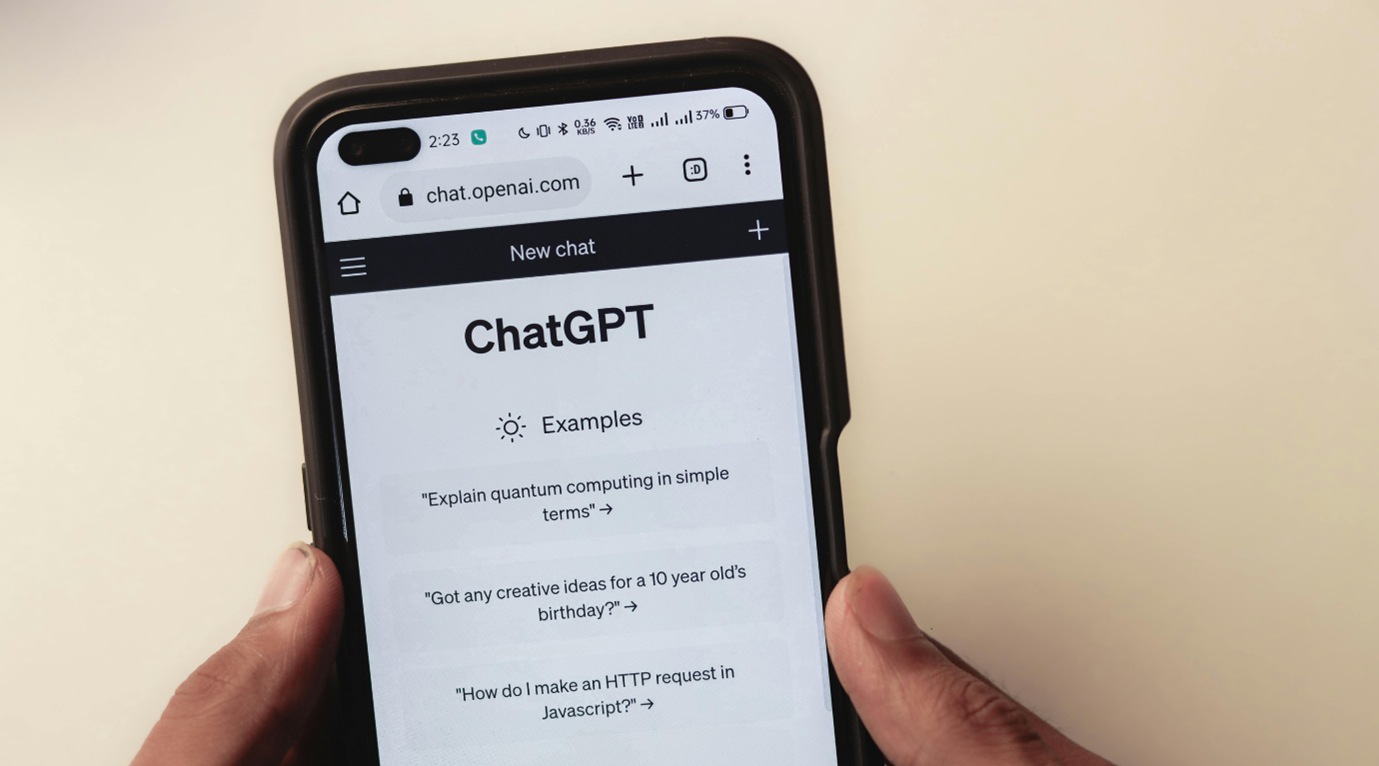Mastering the Art of AI Prompt Engineering
Imagine a world where artificial intelligence (AI) isn’t just a powerful tool, but a versatile artist waiting for the right instructions to create something truly remarkable. This world, believe it or not, is already here. The key lies in a fascinating concept called AI prompt engineering.
Prompt engineering is the art of crafting the perfect set of instructions for an AI model, guiding it towards the desired outcome. Think of it as giving an artist a detailed brief instead of a blank canvas. With the right prompts, AI models, particularly those specializing in language processing and generation, can transform from basic tools into true creative powerhouses.
Why is AI Prompt Engineering So Important?
The field of AI is rapidly evolving, and language models are becoming increasingly sophisticated. However, even the most advanced models still require clear and concise instructions to function effectively. This is where AI prompt engineering steps in. By carefully crafting prompts, we can unlock the full potential of these models and achieve results that were once unimaginable.
Here’s a real-world example: Imagine you’re a marketing executive tasked with creating engaging social media content. You could spend hours brainstorming ideas, or you could leverage the power of an AI model. However, simply feeding the model a generic prompt like “create a social media post” wouldn’t yield the desired outcome. With AI prompt engineering, you can provide the model with specific details about your target audience, brand voice, and desired message. The result? A plethora of creative and relevant social media posts, all generated in a fraction of the time.
This is just one example of the transformative power of AI prompt engineering. In the following sections, we’ll delve deeper into the concept, explore best practices, and showcase how it’s revolutionizing various industries.
Understanding the Magic Behind AI Prompt Engineering
AI prompt engineering goes beyond simply giving instructions. It’s about understanding how AI models interpret and respond to prompts. These models are trained on massive datasets of text and code, allowing them to identify patterns and relationships between words. When you provide a well-crafted prompt, you essentially prime the model for a specific type of output.
Here’s a simplified breakdown of the process:
Crafting the Prompt: You create a clear and concise prompt that outlines your desired outcome. This may include information about the task, context, desired tone, and style.
Model Processing: The AI model analyzes the prompt, drawing upon its knowledge base to understand the instructions.
Generating Output: Based on the prompt and its internal training, the model generates an output that aligns with your specifications. This could be text, code, or even creative content like music or images.
By understanding this process, you can become a master AI prompt engineer, wielding the power of AI to achieve incredible feats.
Best Practices for Crafting Effective Prompts
Now that you understand the basics of AI prompt engineering, let’s dive into some best practices that can help you craft prompts that yield exceptional results.
Be Clear and Specific:
- Avoid ambiguity: Use clear and precise language to avoid confusion.
- Provide context: Give the model as much context as possible to guide its understanding.
- Be specific about desired outcomes: Clearly state what you want the AI to generate.
Example: Instead of “Write a poem,” try “Write a sonnet about the beauty of nature in the style of William Wordsworth.”
Experiment and Iterate:
- Don’t be afraid to try different prompts: AI models are capable of surprising you with their creativity.
- Iterate and refine: If the initial results aren’t quite what you expected, adjust your prompt and try again.
Avoid Bias:
- Be mindful of biases: Ensure your prompts are unbiased and inclusive.
- Consider the model’s training data: Be aware of potential biases in the data the model was trained on.
Structure Your Prompts Effectively:
- Use keywords and phrases: Incorporate relevant keywords and phrases to guide the model’s output.
- Break down complex tasks: If the task is complex, break it down into smaller, more manageable subtasks.
Leverage Few-Shot and Zero-Shot Learning:
- Few-shot learning: Provide the model with a few examples of the desired output.
- Zero-shot learning: Test the model’s ability to generate new outputs without any examples.
Example: For a few, short learning prompts, you might provide the model with a few examples of different writing styles before asking it to generate a piece in a specific style.
By following these best practices, you can significantly improve the quality and relevance of your AI-generated outputs. Remember, AI prompt engineering is an art, and practice makes perfect.
Tools and Techniques for AI Prompt Engineering
As AI prompt engineering becomes increasingly important, a variety of tools and techniques have emerged to assist practitioners in crafting effective prompts. Let’s explore some of the most popular options.
Language Models:
- GPT-3: One of the most powerful language models available, GPT-3 can generate human-quality text, translate languages, write different kinds of creative content, and answer your questions in an informative way.
- BERT: Bidirectional Encoder Representations from Transformers (BERT) is a language model designed to understand the context of a sentence. It’s particularly effective for tasks like answering questions and text summarization.
- T5: Text-to-Text Transfer Transformer (T5) is a versatile model that can be used for a wide range of language tasks, including translation, summarization, and question answering.
Prompt Engineering Platforms:
- PromptBase: This platform allows you to buy and sell prompts, providing a valuable resource for finding inspiration and learning from others.
- Hugging Face: Hugging Face offers a large collection of pre-trained models and tools for natural language processing, including those specifically designed for AI prompt engineering.
Techniques:
- Few-shot learning: Provide the model with a few examples of the desired output to guide its generation.
- Zero-shot learning: Test the model’s ability to generate new outputs without any examples.
- Chain of thought prompting: Guide the model through a series of intermediate steps to arrive at the desired output.
- Meta-learning: Train the model to learn how to learn from new data, allowing it to adapt to different prompts and tasks.
Guide AI to Elevate Your Business—What\'s Your Next Move?
At Neuronimbus, we specialize in leveraging AI prompt engineering to spark innovation and streamline your operations.
Unlock AI Potential Now
Real-World Applications of AI Prompt Engineering
AI prompt engineering is revolutionizing a wide range of industries, from content creation to customer service. Let’s explore some real-world applications and see how this powerful technique is transforming the way we work.
Content Creation:
- Article and blog post generation: AI models can generate high-quality articles and blog posts on a variety of topics, saving time and effort for content creators.
- Creative writing: From poetry to fiction, AI can be used to generate creative content that can inspire and entertain.
- Social media content: AI can help businesses create engaging and relevant social media posts, increasing their reach and engagement.
Customer Service:
- Chatbots: AI-powered chatbots can provide 24/7 customer support, answering questions and resolving issues efficiently.
- Personalized recommendations: AI can analyze customer data to provide personalized recommendations for products or services.
Predictive Analytics:
- Forecasting trends: AI can be used to forecast future trends in industries like finance, marketing, and healthcare.
- Risk assessment: AI can help businesses identify and mitigate potential risks.
The Future of AI Prompt Engineering
AI prompt engineering is a rapidly evolving field, and there’s no doubt that the future holds exciting possibilities. As AI models continue to advance, we can expect to see even more innovative applications of AI prompt engineering.
More Sophisticated Models:
- Advanced language models: Future language models may be capable of understanding and generating even more complex and nuanced language.
- Multimodal models: Models that can process and generate multiple types of data, such as text, images, and audio, will become more common.
New Techniques:
- Reinforcement learning: AI models may be trained using reinforcement learning techniques, allowing them to learn from their interactions with the environment.
- Generative adversarial networks (GANs): GANs can be used to generate highly realistic and creative content, such as images and music.
Career Implications:
- Increased demand for AI practitioners: As AI becomes more prevalent, there will be a growing demand for AI practitioners with expertise in AI prompt engineering and other related fields.
- New job roles: New job roles may emerge, such as AI prompt engineers, AI trainers, and AI ethics specialists.
Ethical Considerations:
- Bias and fairness: It’s essential to ensure that AI models are trained on unbiased data and that their outputs are fair and equitable.
- Misinformation and disinformation: AI can be used to generate misleading or harmful content, so it’s important to develop safeguards to prevent this.
AI prompt engineering is a powerful tool that can unlock the full potential of AI models. As the field continues to evolve, we can expect to see even more innovative and exciting applications of this technology.
Getting Started with AI Prompt Engineering
AI prompt engineering is an exciting field with vast potential. If you’re interested in learning more or applying these techniques in your work, here are some resources and tips to get you started:
Online Courses and Tutorials:
- Coursera: Offers courses on machine learning and natural language processing.
- Fast.ai: Provides free online courses and resources for deep learning.
- Hugging Face Tutorials: Offers tutorials on using Hugging Face’s tools for AI prompt engineering.
Practice and Experiment:
- Start with simple prompts: Begin by experimenting with simple prompts to get a feel for how AI models respond.
- Iterate and refine: Don’t be afraid to try different prompts and adjust your approach as needed.
Join Online Communities:
- Reddit: There are many subreddits dedicated to AI, machine learning, and natural language processing.
- Discord: Join AI-related Discord servers to connect with other practitioners and learn from their experiences.
Stay Up-to-Date:
- Follow AI news and research: Keep up-to-date with the latest developments in the field.
- Attend conferences and workshops: Network with other AI professionals and learn about new techniques and tools.
Conclusion
AI prompt engineering is quickly becoming a pivotal tool for unlocking the vast potential of AI models. Whether you’re generating content, streamlining customer service, or tackling complex business challenges, mastering this technique can elevate your AI applications to the next level. The more you understand and practice AI prompt engineering, the more effective and efficient your AI solutions will be.
As AI continues to advance, the role of prompt engineering will grow in importance. Staying informed about the latest trends and innovations will allow you to lead in this exciting space. At Neuronimbus, we specialize in helping businesses harness the power of AI through cutting-edge strategies like prompt engineering, ensuring you stay ahead of the competition in a fast-evolving digital landscape.
Remember, with the right prompts and a bit of creativity, the possibilities are limitless.




